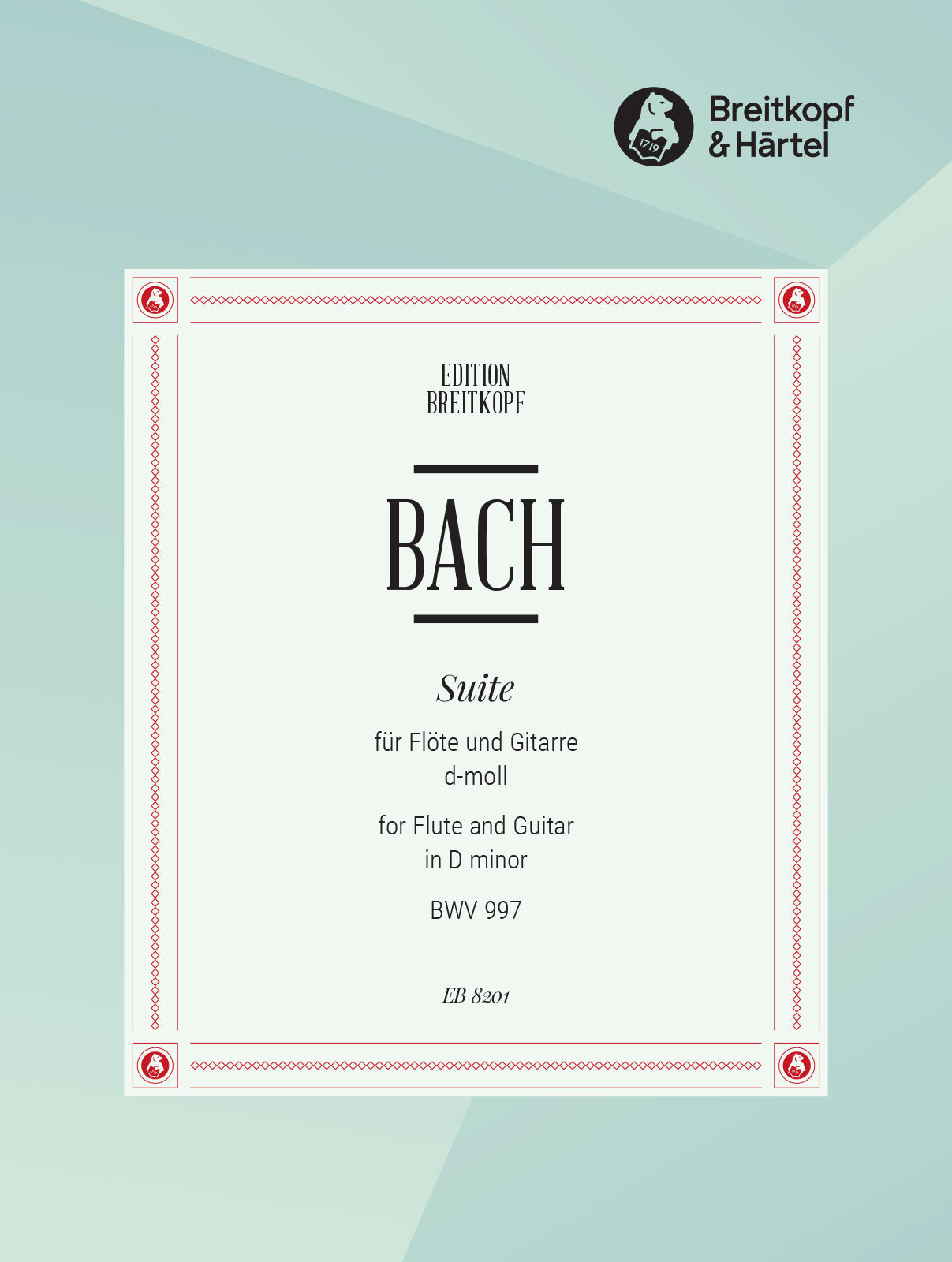Bach: Suite in C Minor, BWV 997 (arr. for flute & guitar)
In stock and typically ships within 1 business day.
- Composer: Johann Sebastian Bach (1685-1750)
- Arranger: Ferdinand Uhlmann
- Instrumentation (this edition): Flute, Guitar
- Originally for: Lute
- Work: Suite in C Minor, BWV 997
- ISMN:
- Size: 9.1 x 12.0 inches
- Pages: 28
Description
The performer and teacher Ansgar Krause rounds off his adaptations of Bach's lute works for the guitar, whereby he consistently upholds the highest standards in his transposition of the originals.
F. Uhlmann (EB 8201) arranged the Partita in C Minor BWV 997 for flute and guitar and set it in D Minor. According to the state of knowledge in the Bach-Werke-Verzeichnis (Bach Works Catalogue), in which BWV 997 was called a "suite" until the small 1998 edition, Uhlmann also chose this title. Sources for both lute-piano and lute have been handed down from the first half of the 18th century, so that the use of the guitar was obvious. The flute part was arranged by Peter Wirz.
A. Krause (EB 8234), however, followed the title of a Leipzig transcription (J. C. Weyrauch, 1730s) in his arrangement for solo guitar with "Partita", since Bach also called works with a loose sequence of movements, such as the one presented here, partitas. The arrangement is in B Minor, but the original pitch of C Minor can be achieved by using the capo.
Publishers use a lot of words to describe what they sell, and we know it can be confusing. We've tried to be as clear as possible to make sure you get exactly what you are looking for. Below are descriptions of the terms that we use to describe the various formats that music often comes in.
Choral Score
A score for vocalists that only contains the vocal lines. The instrumental parts are not there for reference. Generally, cheaper than a vocal score and requires multiple copies for purchase.
Facsimile
Reproductions of the original hand-written scores from the composer.
Full Score
For ensemble music, this indicates that the edition contains all parts on a single system (there are not separate parts for each player). In larger ensembles, this is for the conductor.
Hardcover
Hardbound. Generally either linen-covered or half-leather.
Orchestral Parts
Similar to a wind set, this is a collection of parts. In the case of strings, the numbers listed are the number of copies included, though generally these are available individually (often with minimum quantities required).
Paperback
When publishers offer multiple bindings (e.g. hardcover) or study scores, this is the "standard" version. If you're planning to play the music, this is probably what you want.
Performance / Playing Score
A score of the music containing all parts on one system, intended for players to share. There are not separate parts for each player.
Set of Parts
For ensemble music, this indicates that there are separate individual parts for each player.
Solo Part with Piano Reduction
For solo pieces with orchestra, this is a version that contains a piano reduction of the orchestra parts. For piano pieces, two copies are typically needed for performance.
Study Score
A small (think choral size) copy of the complete score meant for studying, and not playing. They make great add-ons when learning concertos and small chamber works.
Vocal Score
A score prepared for vocalists that includes the piano/organ part or a reduction of the instrumental parts.
Wind Set
For orchestral music, this is a collection of wind and percussion parts. The specific quantities of each instrument are notated.
With Audio
In addition to the printed music, the edition contains recordings of the pieces. This may be an included CD, or access to files on the internet.
With / Without Fingering (Markings)
Some publishers prepare two copies - a pure Urtext edition that includes no fingering (or bowing) suggestions and a lightly edited version that includes a minimal number of editorial markings.



